 |
|
|
|
 |
|
 |
 |
|
 |
|
 |
|
 |
|
 |
|
|
|
 |
|
|
| Post WWII Service Dress Uniform of the Royal Navy Fleet Air Arm to Lt. Commander Grainger Patrick Carlisle (GPC) Williams, DSC, Hero of Cape Matapan |
|
|
| This page is dedicated to GPC's son Lawrence Williams and his family |
|
|
|
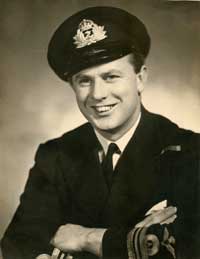 |
|
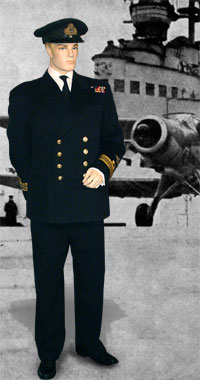 |
|
 |
|
|
Grainger Patrick Carlisle Williams DSC
04.07.38 Promoted to Midshipman
00.08.38 to HMS Hermes
00.02.39 to Pilots Course
17.06.39 Promoted to Acting Sub/Lt(A)
14.03.40 Promoted to Sub/Lt(A)
24.04.40 to 759 Squad, RNAS Eastleigh
01.10.40 to HMS Daedalus
24.11.40 to 829 Sq, HMS Formidable
29.07.41 London Gazette, awarded DSC
00.12.41 to St. Angelo, Malta
17.12.41 Promoted to Lt(A)
18.02.42 to HMS Jackdaw, RNAS Crail
01.10.43 to 829 Squadron
20.04.44 to HMS Daedalus
28.10.46 to HMS Peregrine, RNAS Ford
17.12.49 Promoted to Lt. Cdr.
18.07.55 to HMS Goldcrest, RNAS Brawdy |
|
|
As a Sub Lt.(A), GPC Williams was posted to the HMS Formidable as part of 829 squadron. He was an Albacore pilot with a crew of three. The two others were Observer Mid. Davis and Telegraphist/AG A/L Booth. The Albacore was meant to be a replacement to the Fairey Swordfish but in truth was not much of an improvement. As it happened, S/L Williams and his crew were in Alexandria, Egypt in 1941 awaiting orders for the Formidable, which was playing a game of cat and mouse with the Italian fleet in the Med. |
|
|
| Pictured here on the deck of a RN carrier with an Albacore taking off in the background is G.P.C. Williams in his post-war service tunic, graded at Lt/Cdr. The wartime service tunic was no different with the exception of the shape of the crowns on the buttons and wing. The cap still has the wartime kings badge. |
|
|
*Click on any picture to see full size. |
|
|
|
|
|
Pictured left is Albacore 5A, piloted by Willams on his first strike of the day. At 17:35, Williams flew his second raid, spotting a large Italian ship at 19:25, just as the sun was setting. What follows is from the official staff history of the battle:"Most of the pilots thought they had fired at the Vittorio Veneto, but in the heavy barrage with searchlights flashing in every direction it was extremely difficult to observe anything with precision. Several observers, however, reported a hit on a cruiser, which in the light of subsequent reports proved to have been the Pola. Aircraft '5A' (Sub-Lieutentant (A) G.P.C. Williams) was the last to attack at 19:45 and as the Pola was torpedoed at 19:46 it was probably his torpedo that hit her. He was seen by the Italians flying just above the water pressing in to short range under a withering fire." |
|
|
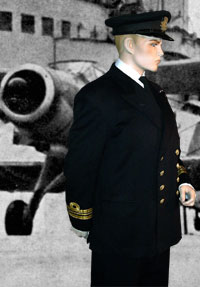 |
|
On March 28, 1941, the British Attack fleet under the leadership of Admiral Andrew Cunningham went searching for the Italian Fleet which had been prodded by its German allies out of safe harbor to go hunting for the British Fleet. The Italian Fleet, under the command of Admiral Iachino possesed a greater number of ships and greater firepower, including the new battleship Vittorio Veneto. What he didn't possess and the British did was airpower, which made all the difference. |
|
 |
|
|
 |
|
|
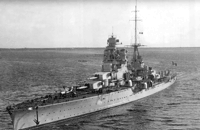 |
|
|
| The Italian Cruiser Pola, Williams subsequent victim. |
|
|
|
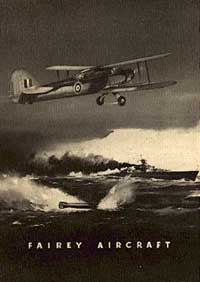 |
|
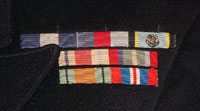 |
|
 |
|
|
|
 |
|
|
Williams and his crew were unhurt in the attack but Albacore 5A was out of gas. Williams ditched the craft and all three crew were rescued by the HMS Juno. For his actions, S/L G.P.C. Williams was awarded the Distinguished Service Cross. In addtion to the DSC, he wears (l-r, t-b) 1939-45 Star, Air Crew Europe Star with Bar for Atlantic Star, North Africa Star, Pacific Star, Defense Medal and War Medal. |
|
|
 |
|
|
This ad by Fairey Aircraft immortalizes S/L Williams heroic attack on the Pola. |
|
|
|
The wing is the only feature that distinguishes Williams' Royal Navy reefer jacket as belonging to a member of the air branch. The crown is that for QEII's reign, as of 1952. |
|
| *Click on any picture to see full size. |
|
|
|
|
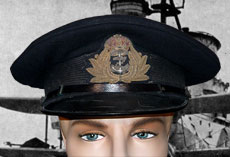 |
|
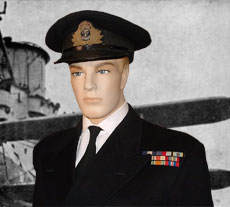 |
|
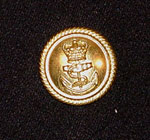 |
|
|
| The standard Royal Navy button, 1952 to current. |
|
| The wartime Royal navy visor hat for officer ranks of Lt. Cdr. and below. For Commander, a row of gold bullion leaves would be added to the visor. For Flag rank (Admiral) two rows would be added. The blue was traditionally worn as winter service dress with the blue jacket. A white top could be added for parade or summer wear. |
|
|
|
|
|
|
|
|
|
All images © 2000-2002 Tod Rathbone |
|
|
|
|
|
|
|
|
|
|
|
|
|
|
|
|
|
|
|
|
|
|
|
|
|
|
|
|
|
|
|
|
|
|
|
|
|
|
|
|
|























